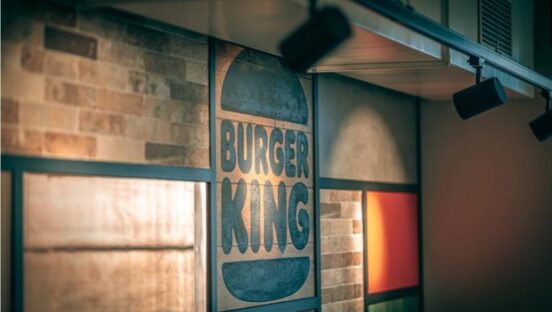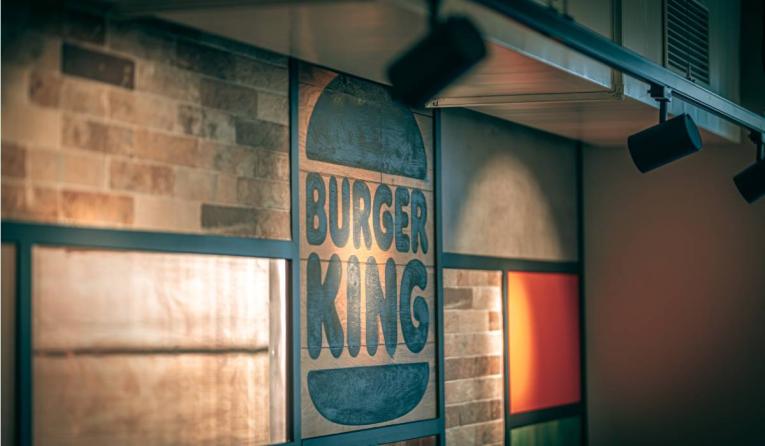The fourth quarter marked Burger King’s first full period under its new $400 million “Reclaim the Flame” turnaround plan, and thus far, the strategy appears to be taking hold.
Burger King’s U.S. same-store sales rose 5 percent, on top of 1.8 percent growth in 2021. It’s also a sequential improvement from Q3 when comps lifted 4 percent. Thanks to the comeback blueprint—and a sharpened focus on operations in mid-2021—guest satisfaction increased more than 40 percent and has seen six straight quarters of growth. The fast-food giant’s franchisee profitability, although down from 2019 figures, was also up 40 percent compared to 2021.
“I feel really good about where we’re going,” said incoming CEO Josh Kobza during the chain’s Q4 and full-year earnings call. “There’s definitely a lot of work left to do. I think we have a tremendous leadership team there under [Burger King U.S. and Canada president Tom Curtis]. And I think their plan is a really good and a very thoughtful one.”
Kobza, who will become RBI’s new chief executive in March, said Burger King accomplished these financials by expanding its field team, implementing a new franchise success system that provides consistent data and key metrics, and holding gold standard service and Whopper training sessions across the system. The fast-food chain began 2023 with Royal Roundtables, which involve bringing together 8,000-plus general managers from more than 40 cities. The goal is to build support behind Reclaim the Flame, provide hands-on education, and instill a sense of pride, Kobza said.
READ MORE: RBI Renews Emphasis on Franchisee Profitability
Out of that $400 million, $250 million is going toward technology, kitchen equipment, building enhancements, and remodels/relocations.
This includes a $50 million Royal Reset Refresh calling for new POS terminals, kitchen display screens, and indoor digital menu boards, which will be deployed starting this month. These investments are matched dollar-for-dollar by participating operators. Because of strong interest, Burger King accelerated its timeline and will spend most of this $50 million investment in 2023.
The company is also working through applications for its Royal Reset Remodel program, which provides up to $200 million in funding for remodels. Restaurants and operators with the greatest potential for higher returns are being prioritized. Almost 25 percent of remodeling applications are for complete scrap and rebuilds.
From that $250 million total, roughly $17 million was spent in the fourth quarter.
“While these scrapes are the most capital-intensive project type, they also see the highest sales uplifts and position the brand for success in their markets for decades to come,” Kobza said.
The remaining $150 million is going toward marketing and digital investments. It began in October when Burger King switched its classic tagline, “Have it Your Way” to “Your Rule.” The change was accompanied by new commercials that put a hip-hop spin on the “Have it Your Way” jingle from the 1970s. Kobza said the company has seen early success from the campaign, including sequential improvements in brand health metrics in Q4. From that $150 million portion, the quick-service giant spent $13 million in the quarter, $9 million of which went toward marketing efforts.
When it comes to the digital business, sales increased 36 percent year-over-year and mixed 11 percent. Same-store sales were also fueled by a focus on the Whopper, momentum from the Royal Crispy Chicken platform, and value positioning.
“I think [the Burger King leaders] have initiatives that they can kind of action in the near-term, which is what we already started to do with some of the new advertising and we’re going to do with some of our refresh where we’re getting a lot of investments into the restaurants quickly with equipment and some of our technology,” Kobza said.
“And then over time, we transition to doing some more of the heavy lifting of some of the big asset upgrades,” he continued. “So I think the consumers of the plan are right. It’s great to see the initial success. You may see us tweak little things around the edges, like we mentioned today on accelerating that early investment all into 2023. But I think by and large, I think it’s a very thoughtful plan.”
Burger King had 19,789 restaurants at the end of 2022, including 7,042 in the U.S. and 12,747 internationally.
Elsewhere across RBI, Tim Hortons Canada saw same-store sales grow 11.6 percent in 2022, its highest mark since joining the company in 2014. In Q4, comps lifted 11 percent year-over-year and almost 9 percent against 2019. Super urban locations were up 2 percent, which is the segment’s first positive result since the pandemic. Kobza said growth was fueled by targeting afternoon food dayparts and cold beverages and momentum from core offerings and digital platforms.
Popeyes U.S. same-store sales increased 1.5 percent in Q4, thanks in part to a better digital business. Roughly 20 percent of sales came via those channels in Q4, a 30 percent increase year-over-year.
Globally, the chain ended 2022 with almost 4,100 restaurants, a leap from the roughly 2,700 it had when RBI acquired it in 2017. There were more than 200 North America openings in 2022, featuring the highest number of new franchisees and the highest percentage of freestanding single or double drive-thru locations in five years. Outside of North America, Popeyes opened 180-plus units, a nearly 7x increase above 2017; that growth came from existing markets like Turkey, Spain, Brazil, and the U.K., and new markets, such as South Korea, India, and Indonesia.
Firehouse finished 2022 with an AUV of almost $925,000 on a trailing 12-month basis, which is a 20 percent increase against 2020. U.S. Comps lifted slightly at 1 percent, rolling over 15.2 percent growth in 2021.
Popeyes had 4,091 stores globally in Q4—2,921 in the U.S. and 1,170 internationally. Tim Hortons operated 5,600 units, inclusive of 3,896 in Canada and 1,704 outside of the country. Firehouse Subs had 1,242 restaurants, 1,187 of which were in the U.S.










